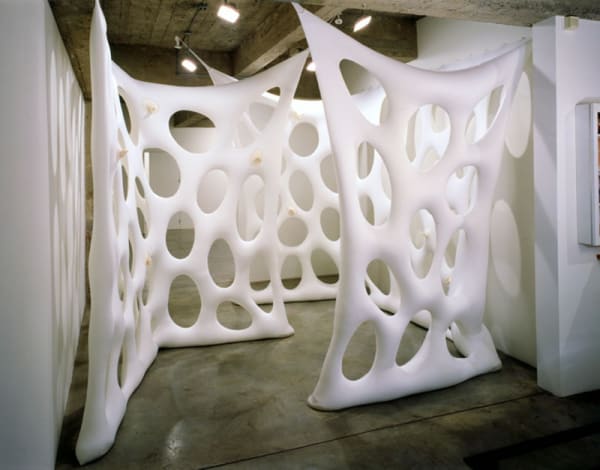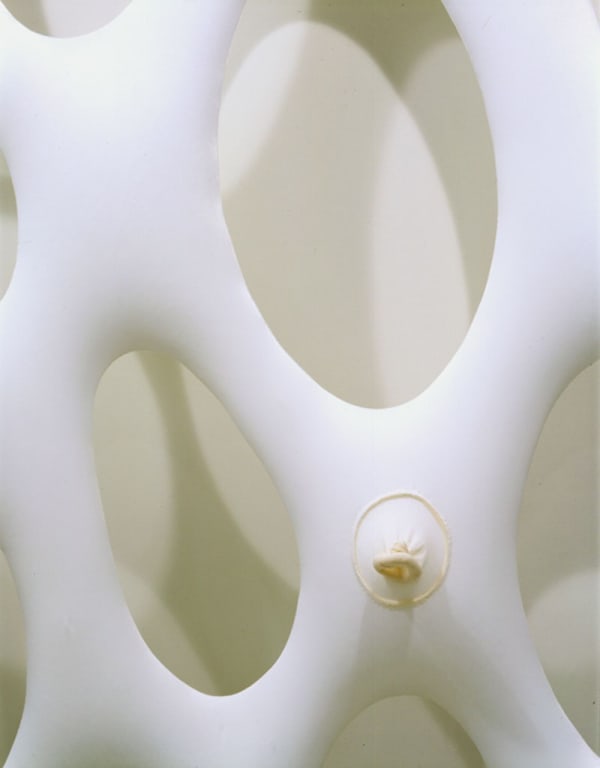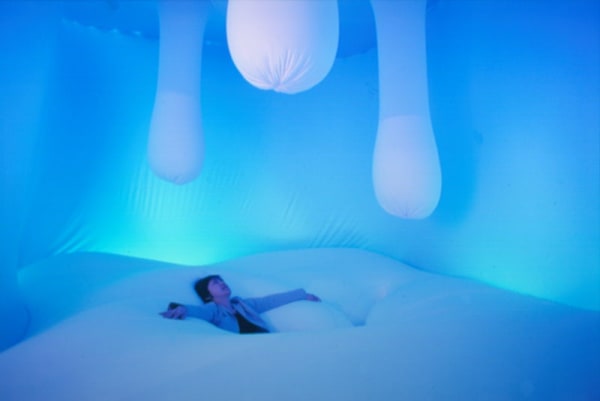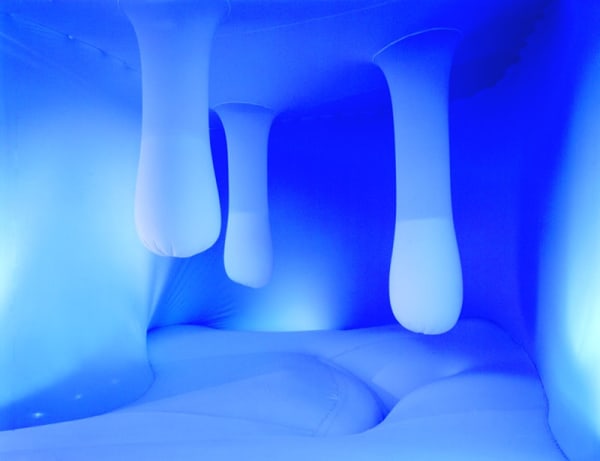Tanya Bonakdar Gallery is pleased to present Ernesto Neto's third solo exhibition with the gallery, "Only the amoebas are happy." With this work, Neto continues to emphasize the tactile, organic human experience in contrast to the alienation of the pure visual spectacle. Consciousness becomes both medium and message, wherein visual form is but one part of a greater perceptive whole. With the body as the primary vessel for interaction within the landscape, it is sensory perception which filters our experience and constructs our consciousness.
Ernesto Neto's sculpture are not merely representational references to the body, or the specific organs of sensory stimulation. Rather, the installations exist as metaphors for the organic and spiritual domain of life. The malleable nature of the material reference the continuity between all life forms in the universe, each affecting the other. Permeable skins function as boundaries, containers, but also function as our points of interconnectivity, one form affecting the next, physically, intellectually and spritually. It is precisely at this point of contact that the art of Ernesto Neto exists. Particularly in this moment of technological indulgence, virtual existance, Neto's work refocuses an emphasis upon the oneness of mind, body, spirit and intellect.
In "Only the amoebas are happy," the visitor is first confronted with a web-like, maze construction that creates a path for the visitor through the gallery's entrance space. Made from a latticework of Styrofoam and fabric, they lead the visitor into the main gallery space. This space functions within the installation predominantly as an entranceway, but also as a point of seduction. The clear and open space leads the visitor towards a large white form that pours out of an amorphous opening in a wall.
Past works by Neto have been more transparent, offering themselves to the visitor to consume from a distance. Only thereafter, is a decision demanded about the level of physical interaction; ie. climbing inside, touching, smelling, penetrating. However, this work is set specifically within the gallery's architecture, so that it cannot be experienced without entering and thereby taking part and becoming the work. A large, soft white form, whose flow into the main gallery space had initially drawn the visitor to enter the cave, functions as the floor of the space, and the base for the universe of sensorial experience. But the visitor becomes a player within this set as well, another being among the rest, another source and receptor for the intellectual and tactile.





